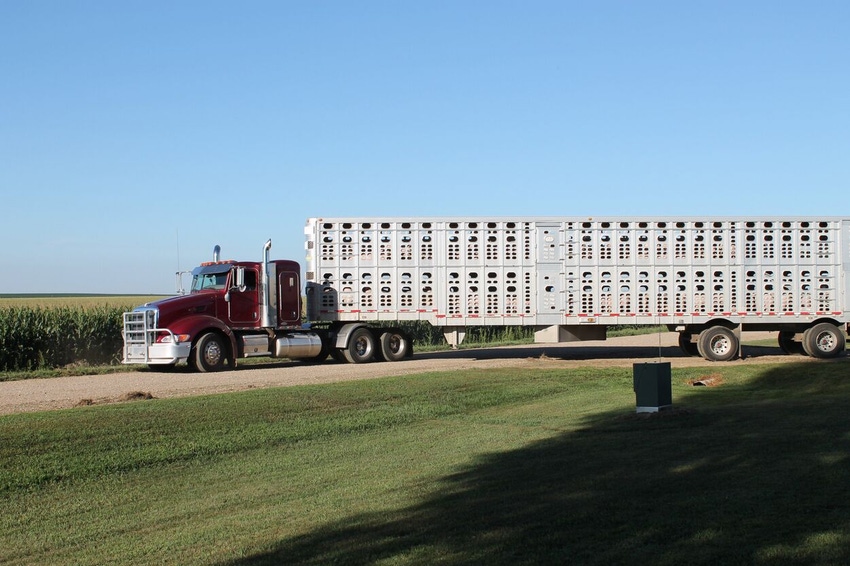Model aims to identify vehicles that may play super-spreader role
Team is modeling potential spread of African swine fever by creating temporal ranges for pathogen's stability, potential introduction into susceptible farms.
November 15, 2022

Work being conducted by Gustavo Machado and colleagues at North Carolina State University seeks to determine between-farm contact networks formed by different vehicle movements. The team has developed a novel model to reconstruct vehicle movement networks. Ongoing work will identify the vehicles that create more connections among the farms and consequently may play a role as disease super-spreaders in the network.
Using a new methodology, the frequency, ratio of visit and cumulative time of vehicles visiting farm units and clean stations is being evaluated resulting in risk stratification by farm production type and region. A risk ratio of visits is calculated from of the number times each vehicle visited a farm divided by the number times each vehicle visited a clean station, which facilitates the comparison among these two variables.
Using this new methodology along with other measurement techniques, the overall objectives of the study include determining the average, maximum and minimum distance of potential disease spread driven by vehicles coming on and off farms. In addition, they are evaluating the impact of cleaning and disinfection effectiveness in reducing the number of between-farm contacts. Their work will help identify likely pathways for disease to spread between farms.
So far, the research team has collected GPS movements from 567 different vehicles from three commercial swine companies from two different regions in the United States. Each vehicle was labeled according to its main transportation role. In addition, for 6,393 farms used in this study, they collected Secure Pork Supply maps from the biosecurity plans available to identify distance between vehicles and perimeter buffer areas, thus enabling them to define when a vehicle is contacting a farm. They are in the process of creating the network structure to evaluate the connection among farms.
As part of the study objectives, the team is modeling potential spread of African swine fever by creating temporal ranges for the pathogen's stability and potential introduction into susceptible farms. Using published literature about ASF stability in the environment, the model also evaluates probable vehicle cleaning effectiveness within the vehicle movement network.
SHIC, launched by the National Pork Board in 2015 solely with Pork Checkoff funding, continues to focus efforts on prevention, preparedness and response to novel and emerging swine disease for the benefit of U.S. swine health. SHIC is funded by America's pork producers to fulfill its mission to protect and enhance the health of the U.S. swine herd.
Source: Swine Health Information Center, which is solely responsible for the information provided, and wholly owns the information. Informa Business Media and all its subsidiaries are not responsible for any of the content contained in this information asset.
You May Also Like



